Central Florida has many choices for growing avocados
There are many tasty varieties of avocados from which to choose.
You can easily narrow your choices by deciding your most important priority: high oil content or not, cold hardiness needed, and do you have a lot of space or just a little space?
Cold tolerant varieties are an excellent choice for planting in zone 9a of Central Florida: typically near SR50 and north.
For cold tolerant avocados (down to 15°), click here.
We've narrowed the field to the most popular varieties that are easy to source and that do well in home orchards for Central Florida, especially in 9b:

Avocados behave as self fertile trees in Central FL
Interesting fact:
Avocados can take 6-18 months to mature, depending on the cultivar. Mexican types mature quickest, in 6-8 months, and Guatamalan types take the longest, up to 18 months. And they don't ripen until 4-5 days after they either drop or are picked off the tree!
Haas-like avocados:
dark-skinned varieties with higher oil content

Super Hass
avocado
Super Hass looks, tastes, and feels EXACTLY like a Hass, but the tree is more vigorous growing and hardy for FL. It often produces slightly larger fruits than the Hass, weighing as much as a pound or more. Ripens Sept-Oct.
Super Hass has a rich, buttery flavor, high oil content, and a long shelf life. Ripens Sept-Oct.

Haas or Hass
avocado
One of the most widely recognized avocados, the Haas is a dark green, bumpy skinned avocado with a rich buttery flavor. At full ripe, the skin is a purplish-black. Haas produces 4-12oz fruit and has a longer shelf life because of its higher oil content. Ripens Oct-Nov.
Hass is the number one commercial avocado grown in California, as well as in New Zealand. It was propagated and patented from a single seedling that grew out of the Great Depression and produced a funny looking bumpy skinned dark avocado! Type A.
Hass does NOT thrive as well in Florida's humidity as it does in California. Trees can grow up to 30' tall and 20' wide, and often have a good year followed by an 'off' year.
Super Hass and Nishikawa both taste EXACTLY like a Haas, and Brogdon and Ore Negro are extremely similar.
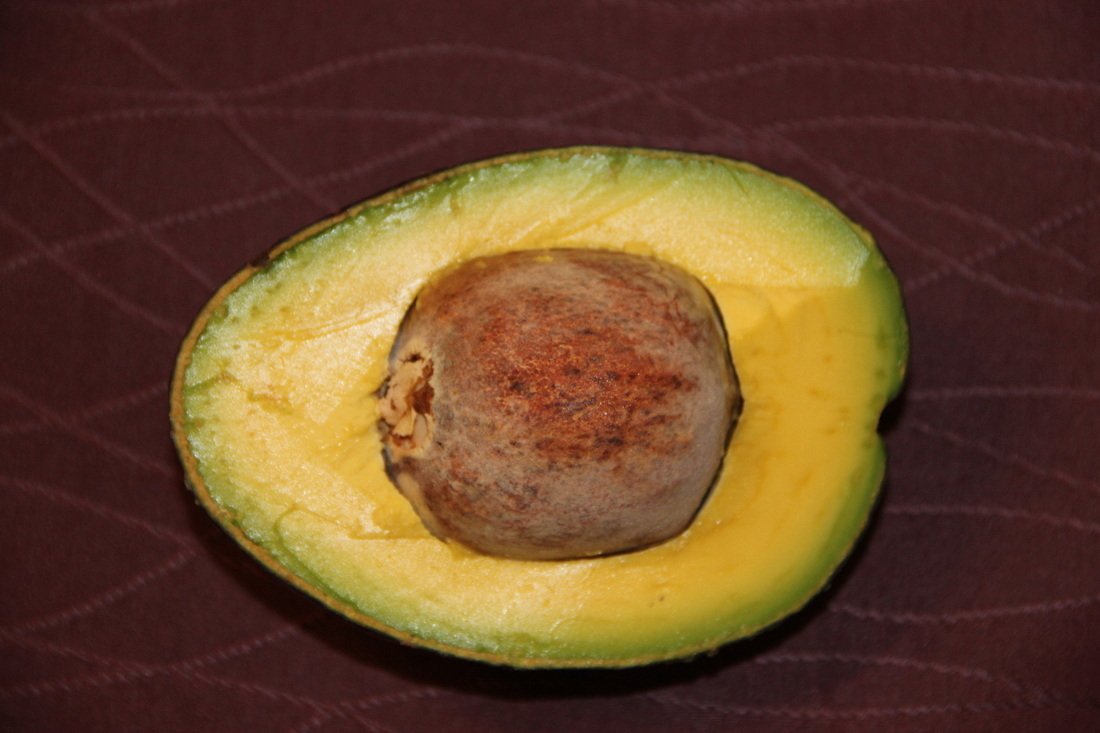
Oro Negro
avocado
'Oro Negro' means 'black gold' in Spanish, and is named such for its shiny black skin when ripe, and its excellent, rich buttery taste and creamy texture.
Fruits are an elongated oval shape, a bit larger than Haas, weighing about 1.5 to 2 lbs on average. Ripens a little later than the Haas, Nov-Dec.
Oro Negro avocados are an attractively balanced tree presenting a natural vigor. They may be a cross between the Monroe and Mexican varieties, though it does not present with the typical anise smell of Mexican types. It was discovered in 1989 as a seedling sprout from a commercial grove in Miami Dade FL. Trees reportedly have no damage at 27-28°, and so may tolerate even lower temps. Type B.

Brogdon
avocado
Brogdon avocados are thin skinned, dark purple outside, and have a superior rich, nutty flavor, very similar to the Hass, but much more hardy.
Fruits usually weigh just under a pound and have a reasonably high oil content. They have not been cultivated as a commercial variety however, because of their thin skins. Ripens July-Sept.
Brogdon avocados are recognized for being more cold hardy than average, tolerating temperatures to 24-25 degrees on occasion. They are thought to be a cross between Mexican-type & West Indian-type cultivars. The original tree was a seedling started in Winter Haven, FL in the 1940's. Type B
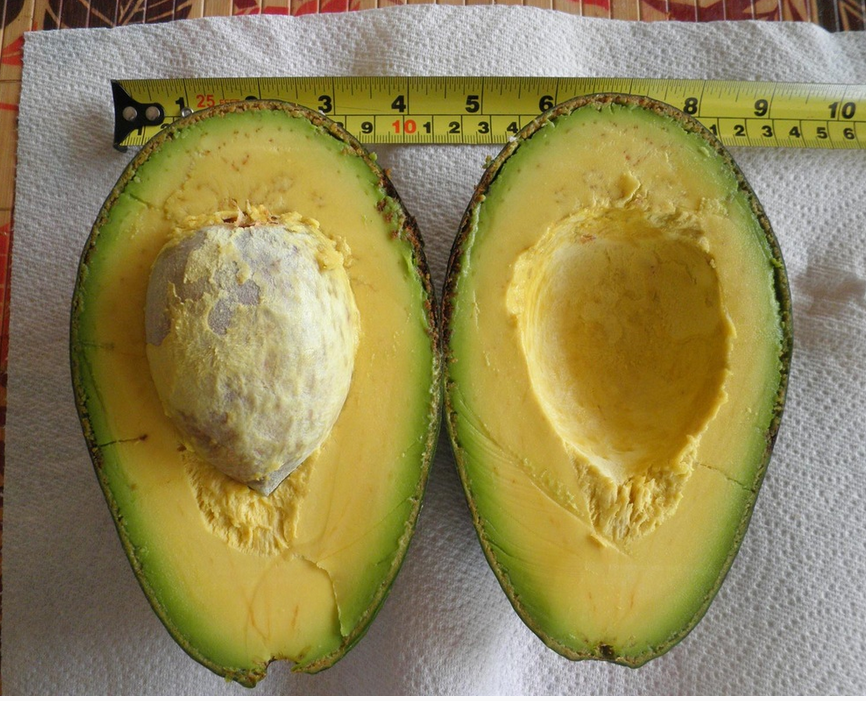
Nishikawa
avocado
Nishikawa avocados are a very dark, green-skinned Hawaiian variety, with a soft, buttery texture. Flavor is essentially the same as a Hass: high oil content with a rich, nutty taste.
Fruits are an elongated oval shape, a bit larger than Haas, weighing about 1.5-2lbs on average. Ripens a little later than the Haas, Nov-Dec.
Nishikawa avocados seem to have a natural vigor in Florida, and tree growth is remarkably symmetrical for an avocado if pruned properly. They are a mixture between Mexican-type & Guatemalan-type cultivars. Type B.
Green-skinned avocados:
oil content varies from 8-10% up to 15%
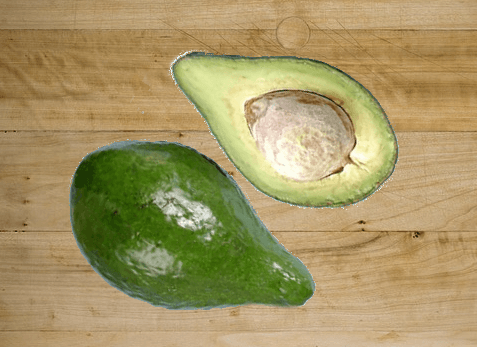
Lula
avocado
Lula is cold tolerant to maybe 25 degrees and is a dependable, prolific producer of green skinned fruit with a slight neck.
Fruit has a thick green skin and weighs nearly one pound. Ripens Oct to Jan.
Lula was the most popular commercial variety in Florida prior to the Hass. Trees are vigorous growing and resists disease so well, it is the preferred root stock in both Florida and southern Texas. Guatamalan x West Indies hybrid. Type A flowers.

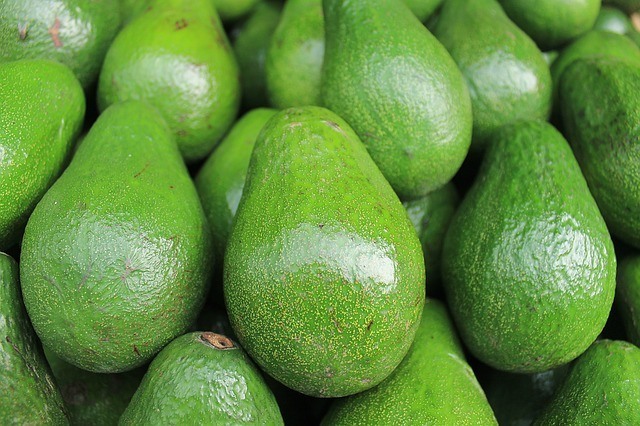
Wurtz
Wurtz is a dwarf Guatemalan & Mexican hybrid that tolerates temperatures to about 25 degrees.
Production is good, and consistent from year to year, with 10-12 oz fruit that has a somewhat thin, smooth green skin. It has excellent flavor and a very small seed. 16% oil content.
Wurtz grows very compactly to a height of about 10' at maturity. Can easily be container grown, but will be a slow grower.
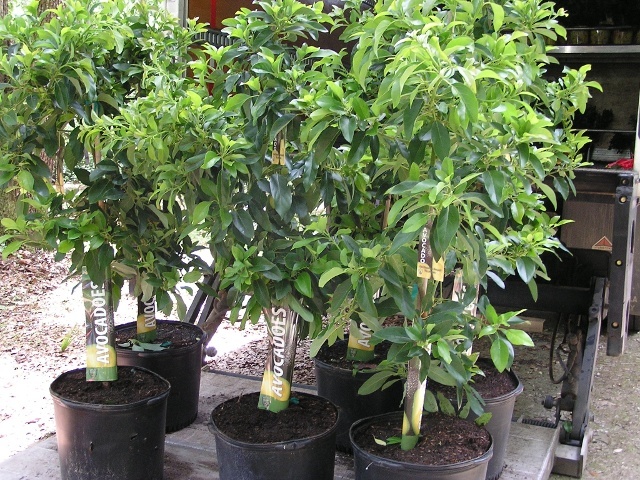
new shipment of Lula avocados
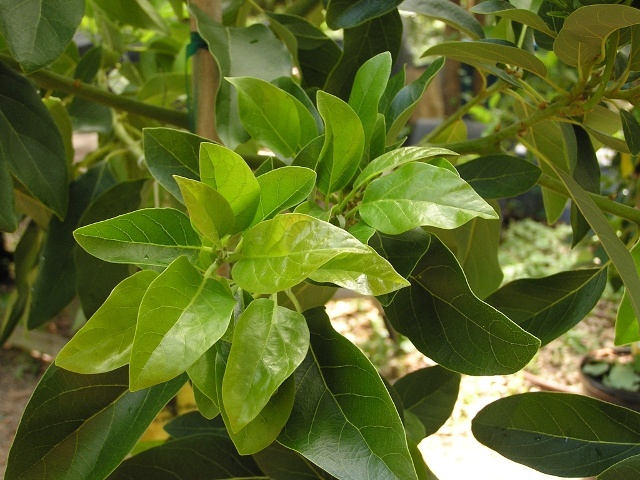
new growth on an avocado
There are 3 distinct families of avocados: West Indian, Guatemalan, and Mexican.
West Indian types are a round, glossy green fruit that is low in oil and weighs up to 2 lbs, but are not cold hardy.
Guatemalan types are medium sized, pear-shaped pebbled skin green fruits that turn blackish-green when ripe, and are also not cold hardy. Fruits take 10-15 months to reach maturity.
The popular "Hass" avocado is a Guatemalan variety and also doesn't produce as well in high humidity.
Super Haas is an improved Haas that tastes, looks and feels EXACTLY like a Haas/Hass but is a far more vigorous tree.
Mexican varieties are smaller at 8-12oz, have paper thin skins, and can be either green or black when ripe. They are the most cold hardy of all, with some tolerant of temperatures down to 15° for short spells.
Fruits mature in 6-8 months.
